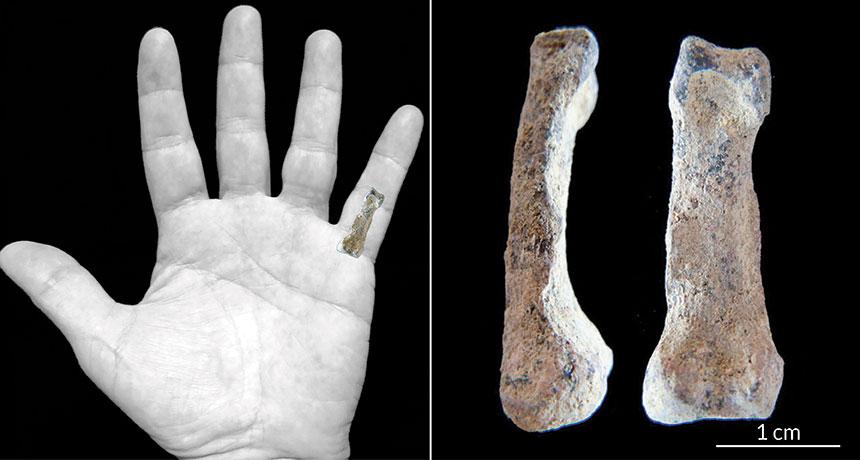-
Tips for becoming a good boxer - November 6, 2020
-
7 expert tips for making your hens night a memorable one - November 6, 2020
-
5 reasons to host your Christmas party on a cruise boat - November 6, 2020
-
What to do when you’re charged with a crime - November 6, 2020
-
Should you get one or multiple dogs? Here’s all you need to know - November 3, 2020
-
A Guide: How to Build Your Very Own Magic Mirror - February 14, 2019
-
Our Top Inspirational Baseball Stars - November 24, 2018
-
Five Tech Tools That Will Help You Turn Your Blog into a Business - November 24, 2018
-
How to Indulge on Vacation without Expanding Your Waist - November 9, 2018
-
5 Strategies for Businesses to Appeal to Today’s Increasingly Mobile-Crazed Customers - November 9, 2018
Oldest humanlike hand bone discovered
Researchers say OH 86, a fossil specimen found in Tanzania, could be the oldest example of a “modern human-like hand”. Scientists say the fossil belongs to an unidentified ancient hominin species. “Our results, along with the archaeological record, reveal that instead of following an orderly trend, eventually culminating in the modern human condition, some “primitive” hand bone morphologies persisted side-by-side with (modern human-like) hand bone morphologies well after the first appearance of stone tools and zooarchaeological evidence of their use for butchery by at least (2.6 million years ago)”. The dextrous digits of the modern human hand enabled man to explore and manipulate the world in new ways, and it was this interaction between hand and brain the spurred the evolution of human intelligence.
Advertisement
“By looking at a single proximal phalanx, we can understand the overall morphology of fingers”, says Dr. Domínguez-Rodrigo, who is a co-director of the Institute of Evolution in Africa.
Dominguez-Rodrigo is the lead author of a new paper on the discovery, published in the journal Nature Communications.
According to researchers involved in the study, this bone doesn’t show any signs of tree-hanging, suggesting that our ancestors could have given up climbing as much as 2 million years ago, setting us on a new evolutionary path. Homo habilis only measured three feet tall. “This implies a creature using tools more frequently”. “The putative presence of a large-bodied, modernly proportioned and modernly capable species of Homo in the early Pleistocene Olduvai basin holds major implications for the potential re-interpretation of traces of hominin behaviour preserved in the numerous Bed I archaeological sites, whose formation has been previously typically attributed to the activities of smaller-bodied, more arboreally adapted H. habilis“.
Advertisement
Then again, it’s just one pinky – so researchers will have to find a lot more bones if they want to confirm their theories.




























